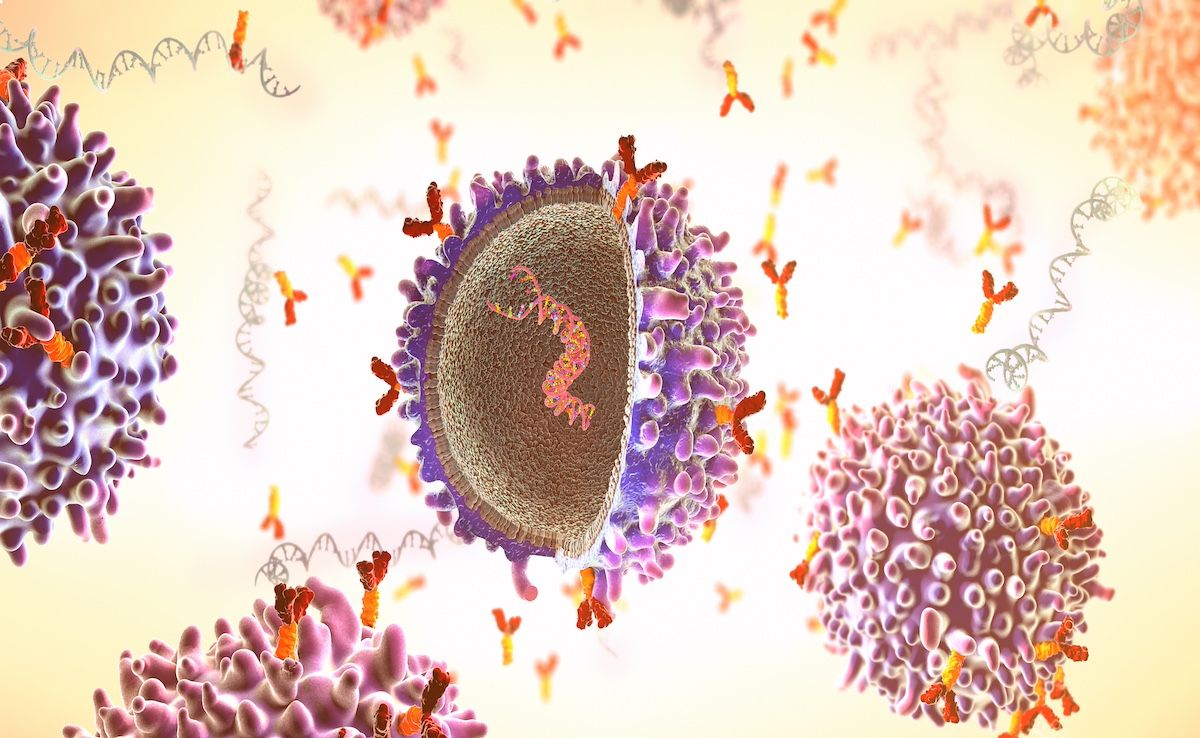- Center on Health Equity & Access
- Clinical
- Health Care Cost
- Health Care Delivery
- Insurance
- Policy
- Technology
- Value-Based Care
In LBCL, Barriers to CAR T Remain: SDOH and More
The social determinants of health (SDOH) that need to be tackled most urgently when it comes to which patients with large B-cell lymphoma (LBCL) do and do not receive chimeric antigen receptor T-cell therapy (CAR T) are age, sex, income, and race/ethnicity.
Addressing the disparities and barriers that relate to patients’ access to chimeric antigen receptor T-cell therapy (CAR T) in the US is an urgent need, according to the authors of a data analysis appearing in Transplantation and Cellular Therapy.1 CAR T has curative potential for patients with relapsed or refractory large B-cell lymphoma (R/R LBCL), yet age, sex, income, race/ethnicity, and distance to a CAR T treatment center are the patient characteristics and social determinants of health (SDOH) that have the most significant impact on CAR T access, the investigators found.
The team tasks manufacturers, providers, policymakers, and other stakeholders to develop assistance programs and to make other health system improvements to reduce the disparities in access to CAR T. LBCL is the most common type of non-Hodgkin lymphoma.
All patients in this observational, nested, case-control study had R/R LBCL and 2 or more prior lines of therapy, and none were participating in a clinical trial. They were stratified based on treatments—CAR T or not CAR T—that they received in the third or later line. Of the 5011 patients who met inclusion criteria, 628 (12.5%) were CAR T recipients.
Top social determinants of health to investigate for why patients with large B-cell lymphoma do or do not receive CAR T are age, sex, income, and race/ethnicity. | Image Credit: Christoph Burgstedt-stock.adobe.com

Specific Disparities, Barriers
Not surprisingly, the distance from a patient’s residence to the nearest treatment center may present a barrier to CAR T access. The likelihood of CAR T therapy was less when the driving time to the nearest center was 121 to 240 minutes (reference group: ≤ 30 minutes; odds ratio [OR], 0.64; P = .04). However, travel times between 31 and 121 minutes or greater than 240 minutes were not significantly different from 30 or fewer minutes.
In terms of race, Black patients were less than half as likely to receive CAR T as White patients (OR, 0.44; P = .01). There was a trend for Hispanic patients to have a slightly lower likelihood of CAR T (OR, 0.50; P = .07). The authors found these race-related data striking, because they held even after controlling for other demographic and clinical characteristics, as well as income, a common proxy for social status.
Overall, however, higher household income was associated with receipt of CAR T. The lowest income group was more than 50% less likely to receive CAR T than the highest income group (OR, 0.44; P = .002). Also, on an unadjusted basis, patients with commercial insurance were 1.5 to 3 times more likely to receive CAR T than others.
Using regression models, the authors found that the likelihood of receiving CAR T decreased with patient age (OR, 0.96; P < .001). The authors speculated that this could be because of oncologists’ concerns about how well older patients can tolerate CAR T compared with non–CAR T therapy—although real-world studies have shown that CAR T is generally effective and safe in older patients.2,3
Other reasons that older patients may opt for CAR T less frequently, the team stated, include the patients’ own preferences and concerns about toxicity; the need with CAR T for caregiver support before, during, and after treatment; and unconscious bias on the part of physicians that reduces referrals of older patients for CAR T.
“Patient education on the safety and efficacy of CAR T may be particularly important among older patients with R/R LBCL,” wrote the authors.
Finally, the data also showed a somewhat unexpected sex bias, with males 29% more likely to receive CAR T (OR, 1.29; P = .02) after controlling for other patient factors. As with the other barriers and SDOH, the investigators concluded, additional research should further explore this finding.
References
1. Ahmed N, Sun F, Teigland C, et al.Chimeric antigen receptor T-cell access in patients with relapsed/refractory large B-cell lymphoma: association of access with social determinants of health and travel time to treatment centers.Transplant Cell Therapy. 2024;30(7):714-725. doi:10.1016/j.jtct.2024.04.017
2. Jacobson CA,Locke FL,Ma L, et al. Real-world evidence of axicabtagene ciloleucel for the treatment of large B cell lymphoma in the United States. Transplant Cell Therapy. 2022;28(9):581.e1-581.e8. doi:10.1016/j.jtct.2022.05.026
3. Chihara D,Liao L,Tkacz J, et al. Real-world evidence of CAR T-cell therapy in older patients with relapsed/refractory diffuse large B-cell lymphoma. Blood.2023;142(12):1047-1055. doi:10.1182/blood.2023020197
Integrated Care for Chronic Conditions: A Randomized Care Management Trial
December 3rd 2025The authors sought to understand the differential impact of payer-led community-based care management approaches on stakeholder-oriented outcomes for publicly insured adults with multiple chronic conditions.
Read More
